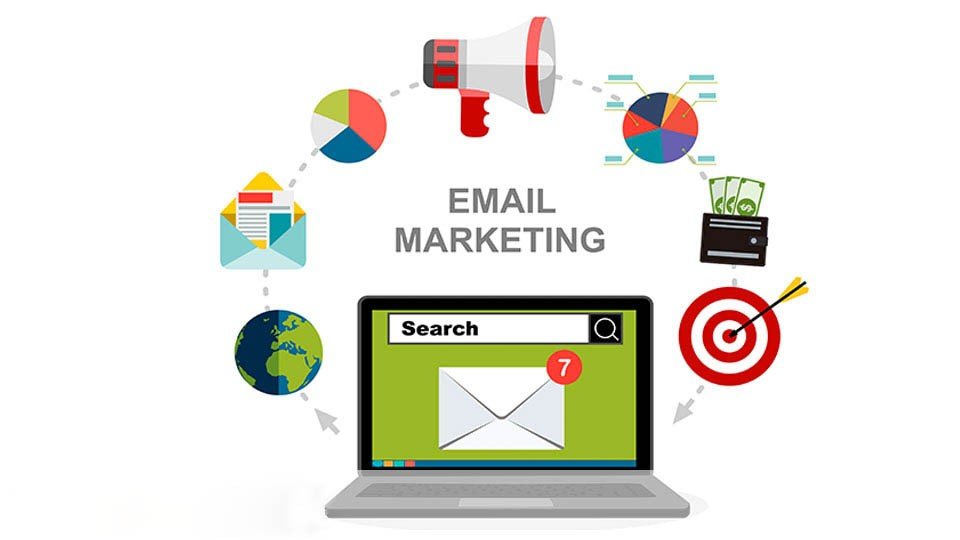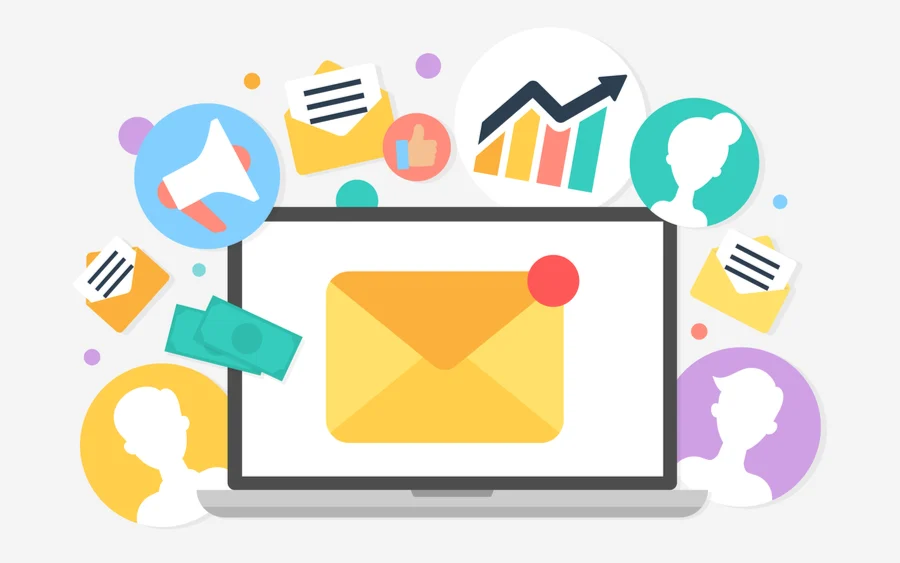What’s up, man? In today’s fast-paced digital world, email remains a powerhouse for communication. But with inboxes overflowing, it takes more than just hitting “send” to make a real impact. Every single detail of your email body matters—from the opening line to the closing signature.
Why? Because crafting an email that resonates with your reader and drives action is a science and an art! Think of it like baking a cake – the right ingredients and techniques can make all the difference between a flop and a masterpiece.
So, are you ready to transform your emails from bland to brilliant? Let’s dive into the nitty-gritty of why every detail counts and how you can level up your email game.
Subject Lines That Sizzle: The Gateway to Engagement
Imagine you’re scrolling through your inbox – a sea of subject lines vying for your attention. Which ones make you stop and click? The ones that are clear, intriguing, and promise value, right?
Your subject line is like a movie trailer – it needs to hook your audience and make them want to see the whole show! So ditch the generic “Updates” or “Meeting Request” and spice things up!
Click-Worthy Subject Lines: Recipes for Success
- Personalize it: Using the recipient’s first name can increase open rates. For example: “Hey [Name], Check out this amazing deal!”
- Highlight the benefit: Clearly state what the reader will gain by opening the email.
- Keep it concise: Aim for under 50 characters to avoid truncation on mobile devices.
- Create curiosity: Use teasers or questions to pique their interest.

The Art of the Opening Line: First Impressions Matter!
You’ve snagged their attention with a killer subject line – now it’s time to reel them in with a captivating opening. Remember, you only have a few seconds to make a good first impression.
Openings That WOW: A Few Tricks Up Your Sleeve
- Personal touch: Mention something specific to the recipient, showing you’ve done your homework. For instance, “I enjoyed our conversation at the conference last week.”
- Spark curiosity: Pose a thought-provoking question or share an intriguing fact. “Did you know that 99% of email users check their inbox every day?”
- Get straight to the point: If the email is time-sensitive or requires immediate action, be upfront about your purpose.
Structuring Your Email Body: Layering for Maximum Impact
Just like a well-constructed building, your email body needs a solid structure to stand tall. It’s all about creating a clear flow that guides your reader through your message and encourages them to take action.
Building a Powerful Email Body: Your Blueprint
- Introduction and context: Briefly reintroduce yourself (if needed) and establish the reason for your email.
- Main message: This is the heart of your email. Break down complex information using bullet points or numbered lists to make it easy to digest.
- Supporting details: Reinforce your points with examples, case studies, or testimonials to add credibility. Keep paragraphs short and to the point.
Visual Appeal: Don’t Be Afraid to Get Creative
Think of your email like a mini-website – it needs to be visually appealing to hold your reader’s attention. A wall of text can be intimidating and make people hit the “delete” button faster than you can say “spam.”
Designing Emails That Delight: Visual Cues That Work
- Bullet points: Break up chunks of text and make key points stand out.
- White space: Don’t be afraid to leave some breathing room! White space helps your email look less cluttered and more inviting.
- Images and graphics: If relevant, use visuals to illustrate your points or add a touch of personality.

Calls to Action That Convert: Guiding Your Reader to the Next Step
You’ve poured your heart into crafting the perfect email – now it’s time to seal the deal! Your call to action (CTA) is the bridge between reading and taking action.
Crafting CTAs That Can’t Be Ignored: A Few Proven Tactics
- Be clear and specific: Tell your reader exactly what you want them to do. Instead of “Learn more,” use “Download our free guide now.”
- Create urgency: Limited-time offers or deadlines can encourage immediate action.
- Use strong action verbs: “Get,” “Discover,” “Join,” – these words evoke a sense of action and excitement.
Email Length: Finding the Sweet Spot for Engagement
We live in a world of short attention spans. No one wants to wade through a novel in their inbox. But crafting an email that’s too short can leave your reader feeling lost or confused. So, what’s the Goldilocks length for maximum impact?
Striking the Perfect Balance: How Long Is Too Long?
- Research-backed insights: Studies suggest that emails between 50-200 words generally perform best.
- Response rate vs. click-through rate: If you’re aiming for replies, keep it concise (50-125 words). If you want people to click a link, around 150-200 words might be ideal.
- Tailor to your audience: Consider your readers and the purpose of the email. A welcome email might be longer, while a promotional blast should be short and sweet.
Mobile Optimization: Catering to the On-the-Go Reader
Let’s face it – we’re glued to our phones! A whopping percentage of emails are opened on mobile devices. If your email isn’t mobile-friendly, it’s like inviting someone to a party and then making them stand outside in the rain. Not cool!
Making Your Emails Mobile-Friendly: Must-Do’s
- Responsive design: Ensure your email template adapts to different screen sizes.
- Concise content: Keep paragraphs short and use bullet points for easy skimming.
- Large font sizes: Make it easy on the eyes! No one wants to squint to read tiny text.
- Clickable buttons: Make your CTAs large enough to tap easily with a finger.
Technical Limits: Avoiding the Spam Folder
You’ve crafted an epic email, but it ends up in the spam folder – talk about a buzzkill! To avoid this digital dungeon, you need to be aware of certain technical limitations.
Staying Out of Spam: Rules to Live By
- Word count: Emails over 2,000 words are more likely to get flagged as spam.
- File size: If your email exceeds 102KB, Gmail might clip it, hiding important information like the unsubscribe link.
- Image optimization: Compress images and host them externally to reduce file size.

The Power of Testing and Analytics: Refining Your Strategy
Just like a scientist in a lab, you need to experiment to find the perfect formula for your emails. Testing and analyzing data is the key to unlocking what resonates with your audience and drives the best results.
Data-Driven Decisions: Let the Numbers Guide You
- A/B testing: Compare different email lengths, subject lines, and CTAs to see what performs best.
- Track key metrics: Monitor open rates, click-through rates, conversion rates, and unsubscribe rates to understand how your emails are performing.
- Iterate based on results: Use the data to refine your email strategy and continually improve your results.
Conclusion
So there you have it – the recipe for crafting emails that truly pack a punch. Remember, it’s not just about hitting “send” – it’s about creating a connection with your reader, delivering value, and inspiring action. By paying attention to every detail, from subject lines that sizzle to calls to action that convert, you can transform your emails from ordinary to extraordinary.
Now go forth and conquer those inboxes! I believe in you!
FAQs
I’m sending a cold email to a potential client. How long should it be? For cold outreach, aim for brevity – around 50-100 words. Introduce yourself, highlight the value you can offer, and include a clear call to action. Remember, you’re trying to spark their interest, not overwhelm them with information.
My email is image-heavy and keeps getting clipped. What can I do? Image optimization is key! Compress images to reduce file size, and consider hosting them externally on a web server. This will prevent your email from exceeding the size limit and getting clipped.
I’ve been A/B testing my emails, but I’m not seeing much difference in results. Any tips? Make sure you’re testing only one variable at a time (e.g., length, subject line, CTA). This will help you isolate what’s working and what’s not. Also, ensure your sample sizes are statistically significant – a small sample size can skew your results.

